May 31, 1921, marks one of the darkest days in America’s history. And yet the Tulsa Race Massacre isn’t an event I ever learned in school — and unfortunately most kids today don’t either. The Burning of Black Wall Street can be a hard day to discuss, but that’s why it’s so important to find educational resources to help teach kids about the day, and its dire impact on America.
In fact, as I’m seeing warnings right now from DHS that centennial remembrance memorials this weekend may be targets for white supremacist groups, it’s clear — again — that the same atrocious, offensive, life-wrecking racism is still present in our country today.
That’s why our kids must learn about the events in our past that represent the worst of America, right along with those events we collectively celebrate.
Only by standing up for truth in our educational curricula can we help the next generation recognize the seeds of evil, and grow to become anti-racist adults who will fight for justice in their communities and help America live up to its promise. For all. This is something we all believe here, deeply.
So, to help parents who who want to teach their kids (and maybe learn more themselves) about Greenwood, Oklahoma, Dick Rowland, and the massacre that took place in the neighborhood known as Black Wall Street 100 years ago, we’ve put together several resources — from a book for elementary aged kids, to videos, articles, and interactive features for tweens, teens and even adults.
For those of you who want more information about the centennial yourself, I hope this helps you feel better prepared to discuss what this weekend is all about, beyond simply Memorial Day.
And of course, while it’s important to teach the hard parts of American history to our kids, a lot of the Tulsa story can be triggering and painful to Black and brown children. As a parent or educator, it helps to be prepared for some surprising reactions and challenging conversations.
– Kate, with Liz
Top Photo: From the American National Red Cross photograph collection at the Library of Congress
Related: If you’ve ever said “this is not America” in response to racism, you need to read Caste.
Tulsa Race Massacre Educational Resources for Kids, Teens and Adults

Full of Black joy, the book Opal’s Greenwood Oasis by Najah-Amatullah Hylton and Quraysh Ali Lansana, and illustrated by Skip Hill is the perfect introduction to Greenwood for elementary aged kids. The book is told from the view of young Opal, a citizen of Greenwood, and it is set the day before the Tulsa Massacre, showing their life before the horrific attack.
Kids will see the busy stores and happy families in the Greenwood neighborhood, giving them a chance to appreciate the achievements and success that the people of Greenwood enjoyed before the massacre.
There is a page in the back of the book dedicated to what came afterwards, but I love the crux of the book is a celebration of the prosperity and accomplishments of the community.
(This book is available through our affiliate Amazon, or please support your local indie bookseller and order through them)
Related: 7 incredible must-read Black History Month books for kids and teens
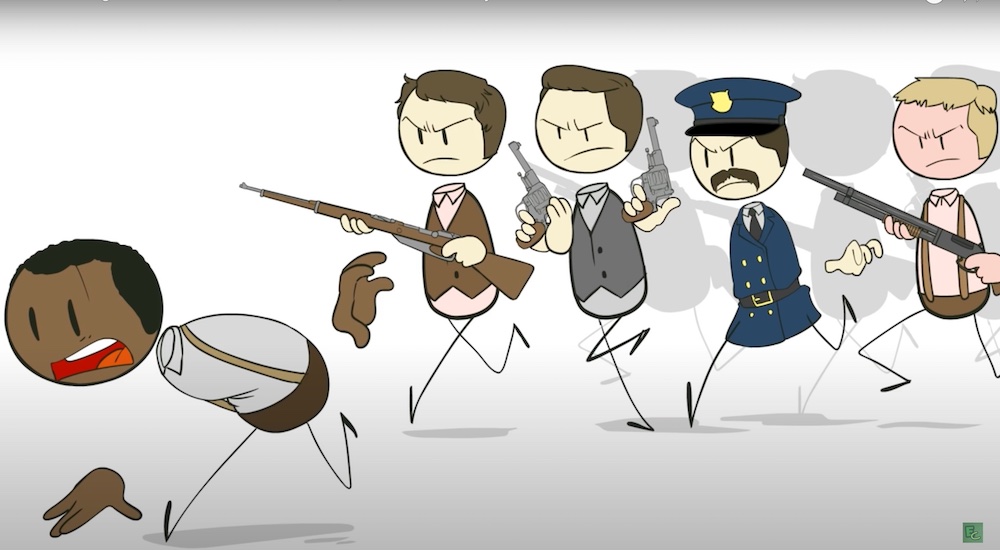
A great resource for middle school and up, is the 9-minute animated video “The Burning of Black Wall Street,” by Extra Credits. Written by Black historian and award-winning author Steven Van Patten, it explains the culture in Tulsa leading up to the massacre, including the growing white resistance to Black success in Greenwood.
The minimalist illustration style spares younger kids some of the more horrific details without compromising accuracy, though there are depictions of violence and blood. The video covers a lot of information and will give kids a pretty good overview of what happened on May 30, 1921.
Also appreciated: The money made from ads on this YouTube video is donated to the NAACP Legal Defense Fund.
Related: 7 outstanding, important Black History month Twitter threads to read right now.
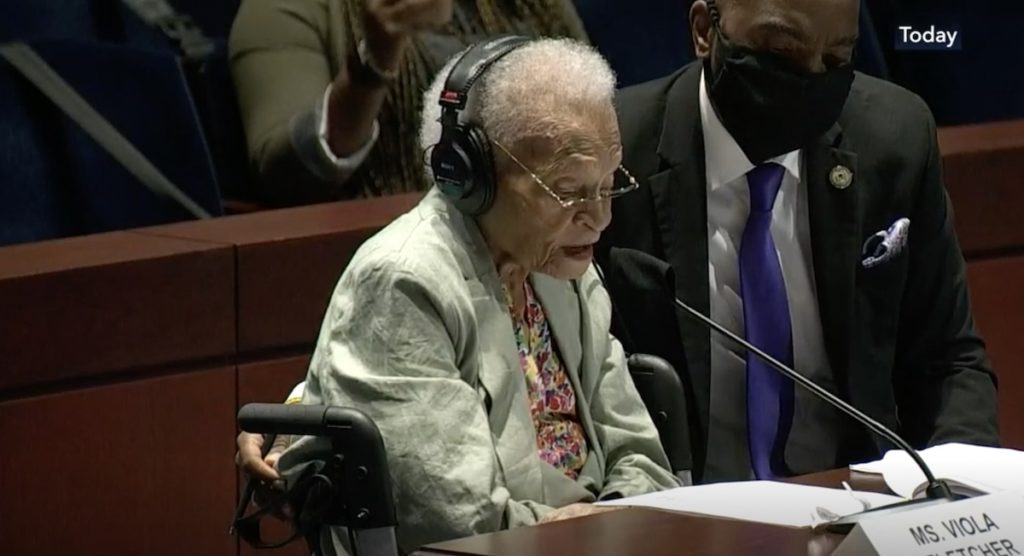
Because we know how impactful and essential it is to preserve first-hand accounts of historic atrocities, we suggest that whatever your children’s ages, you’re sure to watch the recent Congressional testimony of Viola Fletcher, who at 107, is the oldest living survivor of the Tulsa Race Massacre.
She appeared with her 100-year-old brother, as well as a third survivor, 106-year-old Lessie Benningfield Randle. The excerpt of her testimony and an overview is linked above, in a Washington post article. To watch the full 2 ½ hour hearing, you can view the archived video of testimony on C-Span.
Ms. Fletcher poignantly describes her beautiful home, her friends, her safe and normal life, before stating, “within a few hours, all of that was gone,” and making a plea for reparations and justice for the community.
At the end of her testimony, she received a standing ovation from Congress.
Related: 5 fabulous books about Black women leaders and activists
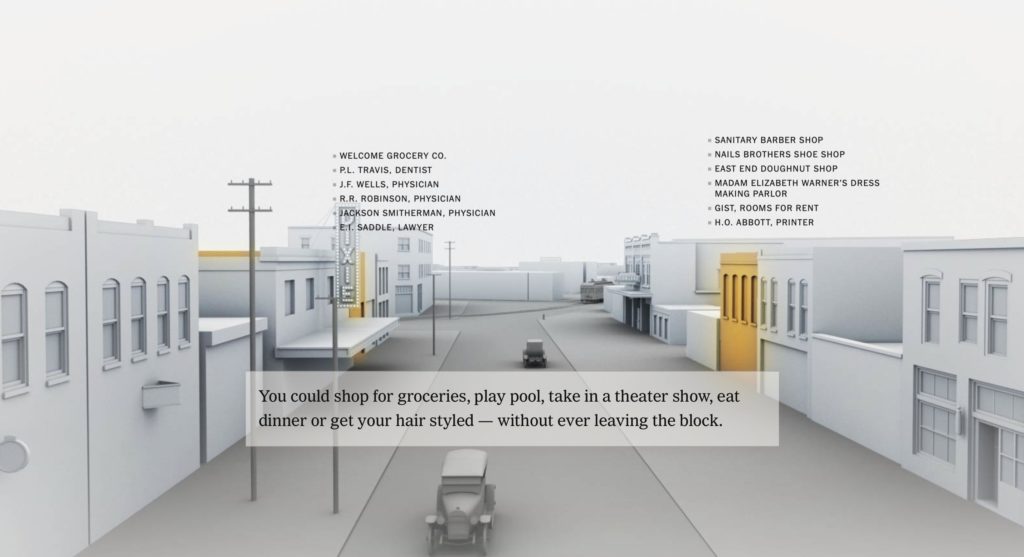
The New York Times interactive presentation, What The Tulsa Race Massacre Destroyed, is an absolutely compelling, fascinating way of bringing Greenwood and its tragic events to life, thanks to the collective contributions of Yuliya Parshina-Kottas, Anjali Singhvi, Audra D.S. Burch, Troy Griggs, Mika Gröndahl, Lingdong Huang, Tim Wallace, Jeremy White and Josh Williams.
As they put it, “for decades, what happened in Greenwood was willfully buried in history.” So they’ve pieced together photos, archival maps, survivor testimonies and more, to recreate a 3-D model of the Greenwood neighborhood as it was before the destruction and help us to know the Americans who lived, worked, and raised their families there.
As you move through the exhibit, you come to understand the vibrance of Greenwood before the Massacre, the lives of those in the community both before and after, the many (many) businesses that were impacted — and finally, the shameful coverup and continued lack of justice for the victims, the survivors, and their descendants.
As a follow-up, older teens may be interest in Caleb Gayle’s NY Times feature, 100 Years After the Tulsa Massacre: What Does Justice Look Like? It’s also available as an audio story, making it easy for families to listen together and kick off discussions about it.
The Tulsa Race Massacre is not a thing that happened to Black people in Oklahoma. It happened TO US. I don’t know anyone in Pearl Harbor or the World Trade Center. But we refer to those acts of terror as attacks on America…
“This country.”
— Michael Harriot (@michaelharriot) May 26, 2021
We also highly recommend that adults and teens read Michael Harriot’s excellent article in The Root, What We Lost in the Fire: Black Wall Street Before the Tulsa Race Massacre. It offers important context for just how wide-ranging the impact of the Massacre was, and correctly frames it as a domestic terrorist event. Plus, he provides an outstanding reminder, once again, that Black history is US history. Or as he puts it, “The Tulsa Race Massacre is not a thing that happened to some people in Oklahoma. It happened to us.”

For older kids who appreciate documentaries, NBCBLK’s Blood on Black Wall Street, The Legacy of the Tulsa Race Massacre is an excellent, engaging, and honest video. Pulitzer-winning journalist Tremaine Lee journeys to Tulsa to speak with residents of Greenwood and descendants of the Massacre — some of whom live right in that very neighborhood today and were never taught about its history. One of the most compelling people in the story is Bobby Eaton Sr., whose father owned the successful barbershop in town at the time of the attack.
You can read more about him in this feature in The Black Wall Street Times
(The accompanying article on NBC’s website also provides a concise and accurate overview.)
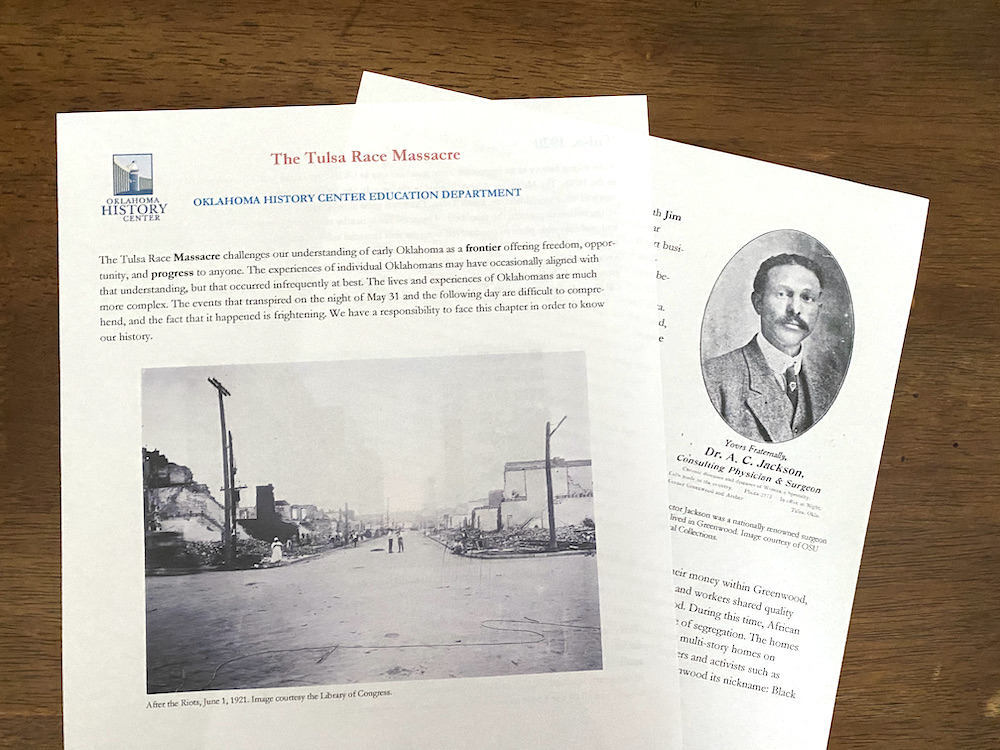
For teens and even adults, the 1921 Tulsa Race Massacre Centennial Commission offers a great batch of resources for students. The site has 1-day lessons, 5-day lessons, and a complete lesson plan that’s helpful to homeschoolers, teachers, or to kids who just want to research more.
Even if you aren’t a teacher, you can still print out these lesson plans and read through them with your older kids to give them a factual, evidence-based understanding of this event, including the national and local catalysts leading up to it. including the just-under 30 minutes long “Through the Looking Glass Darkly” documentary video.
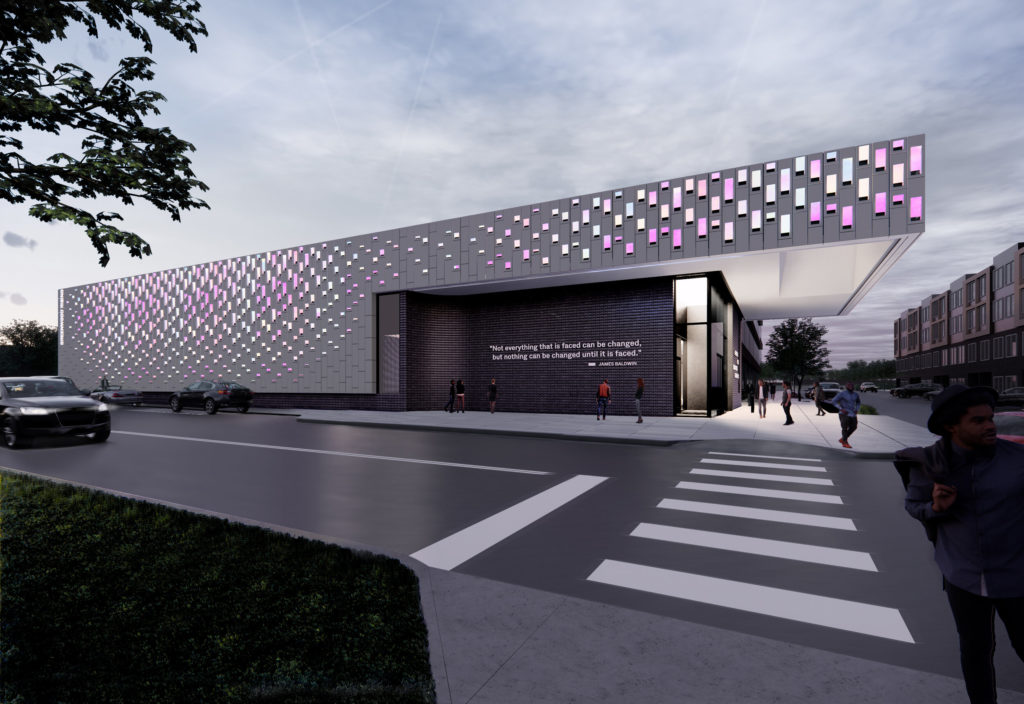
Finally, if you are in the Tulsa area or plan to travel, you now have the opportunity to visit the brand new Greenwood Rising Historic Center which should be fully open by July. It was designed over the past 6 years to help Oklahomans and Americans at large learn more about the importance of Black Wall Street and the impact of the Tulsa Massacre, and to commemorate the history while creating opportunities as well.
There is a VIP opening in early June with tickets prioritized for a group including survivors and family, direct descendants, Freedman and descendants, and locals with ties to Greenwood. Limited Preview start rolling out in mid-June.
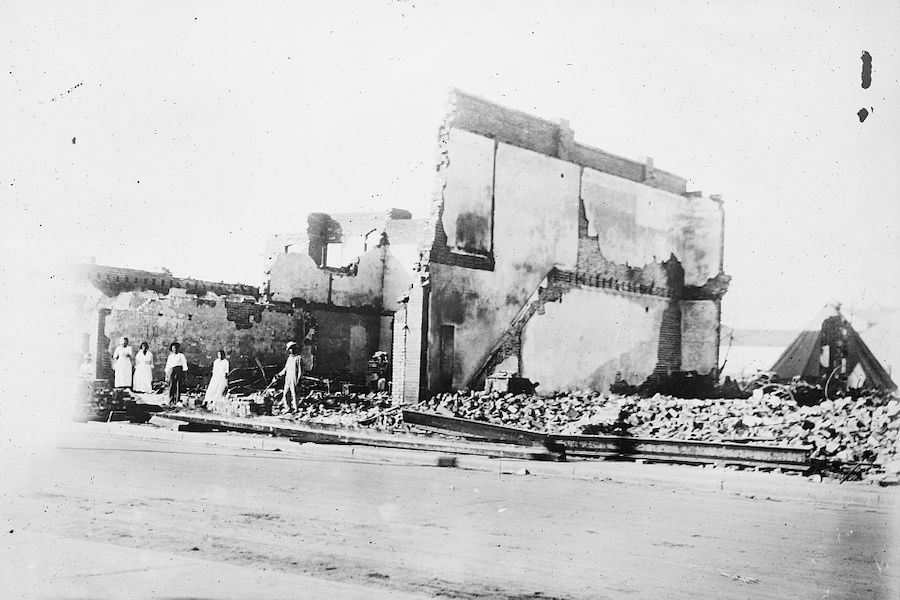





Thanks for these.